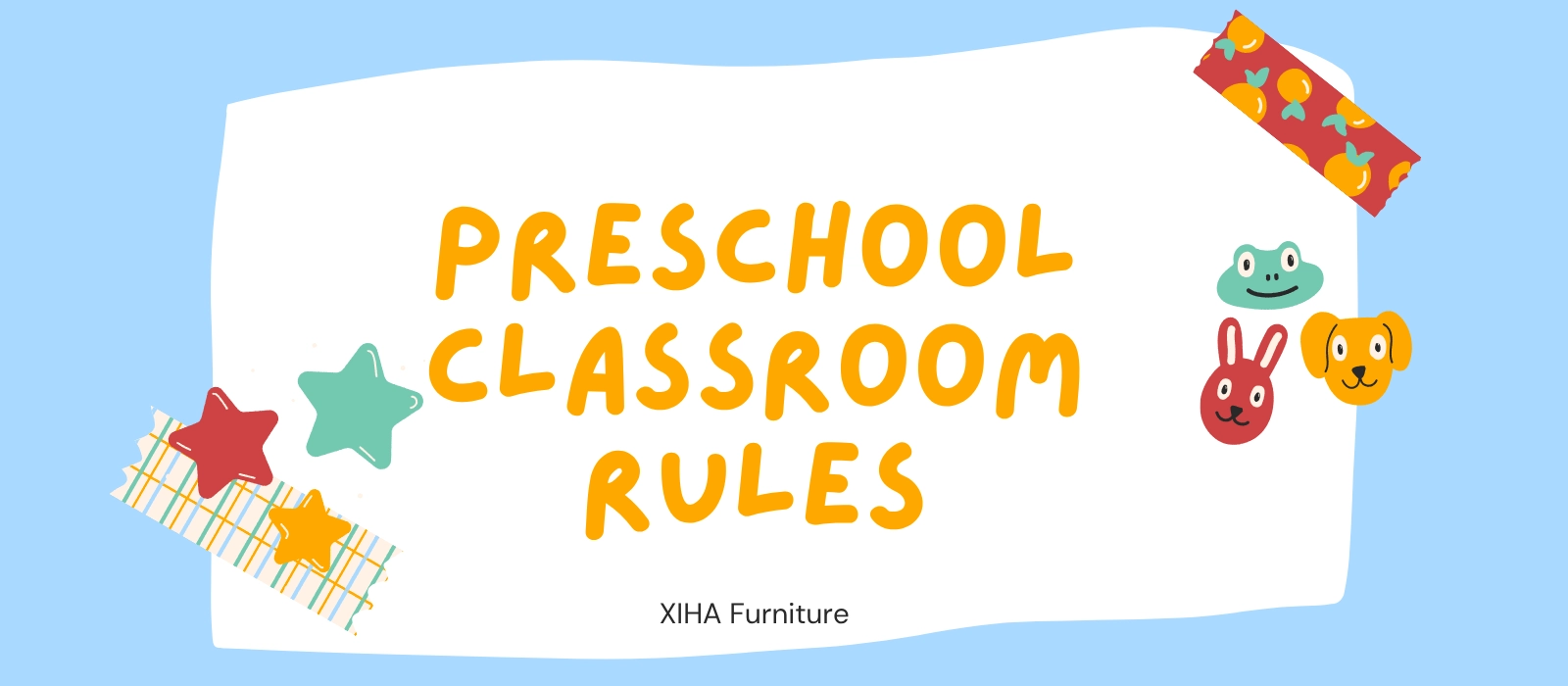Are preschool classroom rules really necessary? Won’t rules limit children’s creativity? How do we ensure that young children actually follow the rules? And what kind of classroom rules are best for preschoolers?
Preschool classroom rules are essential for fostering a safe, respectful, and structured environment that supports early childhood development. These rules help young children understand expectations, develop self-control, build social skills, and feel secure. Without clear classroom rules, preschoolers often struggle to engage in group activities, leading to chaos and missed learning opportunities.
In this guide, I’ll share everything I’ve learned about setting up effective classroom rules for preschoolers—from understanding their purpose, to creating the rules, using free printable resources, and enforcing them in gentle yet impactful ways.
What Are Preschool Classroom Rules?
Preschool classroom rules are age-appropriate guidelines that outline acceptable behavior and help structure the daily routine in a preschool setting. These classroom rules for preschoolers act as a compass, guiding young children on how to behave, interact with others, and engage safely in their environment. Unlike older students, preschoolers require simple, clear, and consistent expectations they can understand and follow.
Classroom rules for preschool often include statements like “Use gentle hands,” “Listen when the teacher is talking,” “Walk indoors,” or “Clean up after playtime.” These rules help instill basic manners, safety awareness, and cooperation, which are foundational to a positive classroom culture. They are typically introduced at the beginning of the school year and revisited daily to reinforce consistency.
To ensure preschool classroom rules are effective, they are usually presented with visual aids—such as posters, flashcards, or illustrated charts—making them more accessible for young learners who may not yet be reading fluently. Many educators also use songs, role-playing, or puppets to help children internalize these rules in an engaging and memorable way.
Preschool rules for the classroom should be developmentally appropriate, focusing on what children can do rather than punishing what they shouldn’t do. Rules should be phrased positively, such as “Use inside voices” rather than “Don’t shout.” This positive framing helps children feel encouraged rather than restricted.
Ultimately, the rules of the classroom in preschool settings serve multiple purposes: they establish expectations, foster independence, prevent conflicts, and build a community where every child feels safe and respected. As children grow and mature, these classroom rules evolve with them, laying the foundation for lifelong habits of responsibility and cooperation.
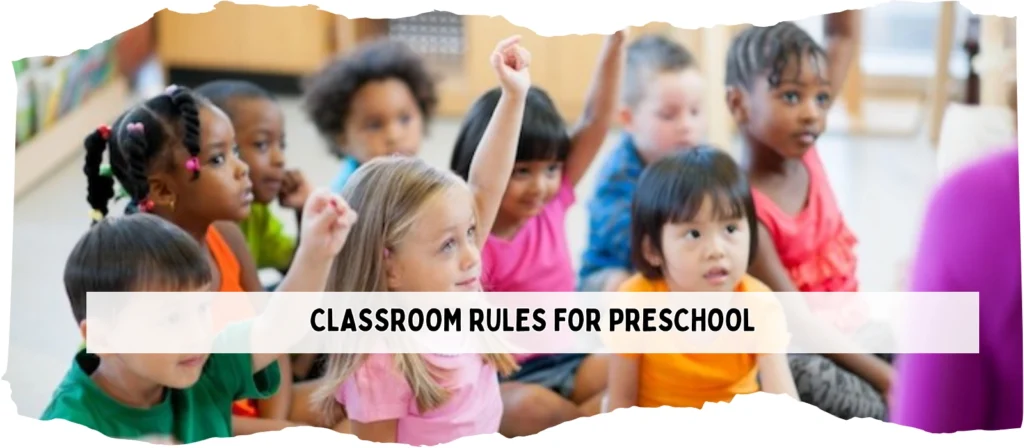
Why Preschool Classroom Rules Are Important for Early Childhood Development
Preschool classroom rules are more than simple directives—they are vital tools in shaping the way young children understand and interact with the world around them. When implemented thoughtfully, classroom rules in preschool create a learning environment where children feel safe, respected, and ready to explore.
Encouraging Social-Emotional Development
Rules of the classroom for preschool settings are deeply tied to social-emotional growth. At this stage, children are learning empathy, patience, and cooperation. Classroom rules like “Take turns” or “Keep your hands to yourself” teach preschoolers how to manage impulses, respect personal boundaries, and work harmoniously with others. These are not just behavioral goals—they are foundational skills for emotional intelligence.
Promoting Safety and Security
Preschoolers are naturally curious and energetic, which means that without rules, classrooms can quickly become chaotic and unsafe. Rules for a preschool classroom—like “Walk, don’t run,” or “Use materials properly”—help minimize accidents and create a physically safe space for exploration. A predictable environment anchored in clear rules reassures children and reduces anxiety.
Building Positive Learning Habits
Establishing classroom rules preschool children can understand helps build routines and habits that support lifelong learning. Rules such as “Raise your hand to speak” or “Listen when others are talking” introduce the structure needed for academic focus. Over time, these rules become internalized, supporting independence and self-regulation.
Supporting Classroom Management
From a teacher’s perspective, rules make classroom management smoother and more consistent. With clear classroom rules for preschool printables posted on walls and reinforced through daily routines, children know what to expect and what is expected of them. This reduces the need for constant correction and creates a more positive, nurturing classroom climate.
Enhancing Respect and Inclusivity
Preschool classroom rules also foster inclusivity. When all children follow the same expectations, it creates a sense of fairness. It also helps children from diverse backgrounds adapt more easily, as they are introduced to shared values like kindness, listening, and respect for differences.
In short, classroom rules for preschoolers are not about control—they are about empowerment. By guiding young children with compassion and clarity, these rules pave the way for confident, respectful, and enthusiastic learners.
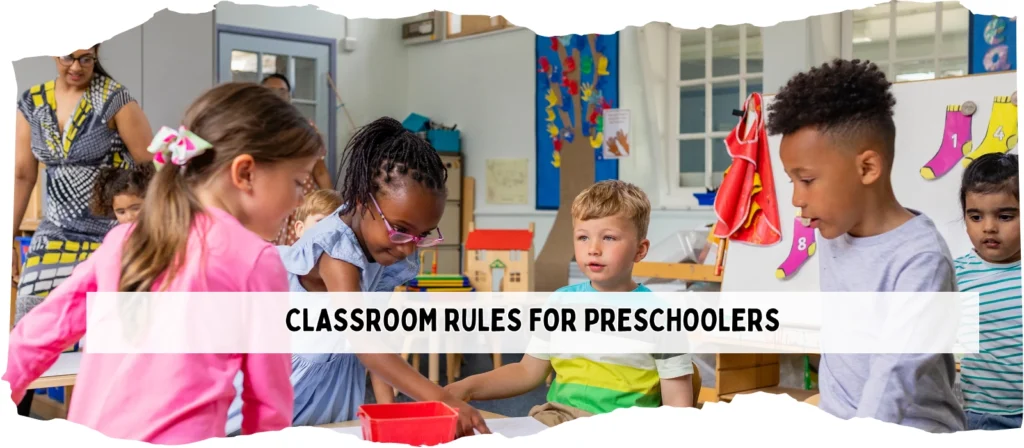
What to Consider Before Creating Preschool Classroom Rules
Creating effective preschool classroom rules begins long before writing anything on a poster. Teachers must take several critical factors into account to ensure the rules are developmentally appropriate, inclusive, and effective.
Age and Developmental Level
The first consideration is the developmental stage of preschoolers. Young children are still learning to manage emotions, communicate clearly, and understand consequences. Rules should be simple, concrete, and actionable. For example, “Use kind words” is more understandable than “Be respectful.” Aligning classroom rules preschool children can grasp ensures better engagement and less frustration.
Cultural and Family Backgrounds
Preschoolers come from a variety of cultural and family contexts, each with its own norms and expectations. Classroom rules for preschoolers should be inclusive and respectful of diversity. A rule like “We say hello to friends” encourages community without imposing a specific cultural behavior that may not be universal. Open communication with families can help align classroom expectations with home values.
Group Size and Classroom Layout
The number of children in the classroom and the physical setup influence how rules are implemented. For instance, a rule such as “Sit in your space” may require visual boundaries like mats or spots for circle time. In classrooms with more children, rules must be reinforced more frequently and consistently.
Educational Goals and Teaching Philosophy
Different preschool programs (e.g., Montessori, Reggio Emilia, play-based) have distinct approaches to learning and discipline. Classroom rules for preschool should reflect the overarching goals of the program. For example, a Montessori classroom may emphasize independence with rules like “Return materials where you found them.” Understanding your educational framework helps ensure your rules support your teaching style.
Language and Communication
Preschoolers are still acquiring language, so rules must be communicated clearly. Use simple vocabulary, visual aids, and consistent gestures or cues. Repeating the rules daily or integrating them into songs and stories increases understanding and memory. Printable classroom rules for preschool can be reinforced through posters, picture cards, or take-home materials for families.
Taking the time to consider these elements makes classroom rules more than just words on a wall—they become practical tools for harmony, learning, and growth.
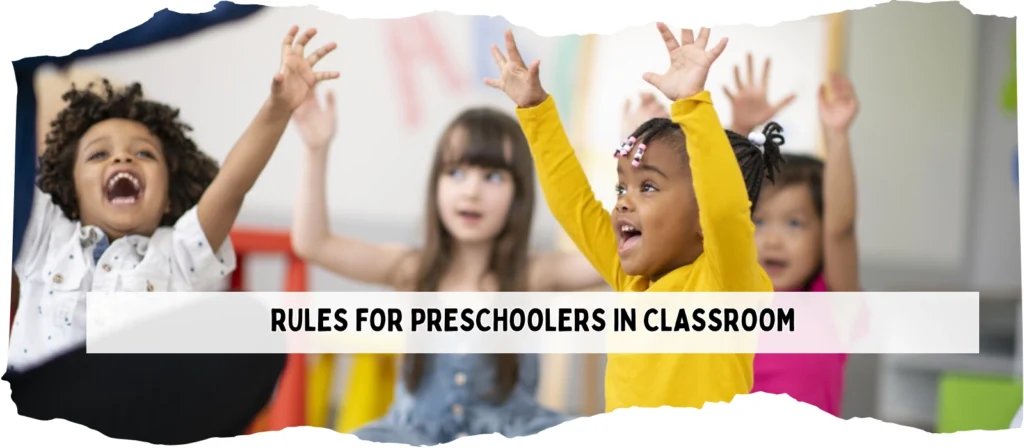
How to Create Clear and Positive Preschool Classroom Rules
Creating preschool classroom rules that are both effective and child-friendly requires intention and structure. The process must combine understanding of child psychology, positive discipline methods, and the classroom’s specific environment. Here’s how to develop rules for a preschool classroom that truly work.
Start with Core Values
Begin by identifying the values you want to promote in your preschool classroom—such as respect, responsibility, kindness, and safety. Preschool classroom rules should be a reflection of these values in action. For instance, if safety is a priority, a corresponding rule might be “Walk inside the classroom.”
Keep It Simple and Positive
Classroom rules preschool children can follow should be limited to 4–6 key rules, stated in positive language. Avoid “no” or “don’t” statements. Instead of “Don’t run,” say “Use walking feet.” Instead of “No shouting,” say “Use your inside voice.” This helps children understand what to do, not just what to avoid.
Make Rules Visual and Interactive
Visual representation is essential. Use printable classroom rules for preschool with pictures illustrating each rule. You can find ready-made preschool classroom rules printables online or create custom versions that include your students’ photos to increase ownership. Integrating rule review into morning routines or songs also reinforces them daily.
Involve Children in the Process
Whenever possible, involve the children in creating the rules. Ask them what helps everyone feel happy and safe in the classroom. Writing rules together, using children’s language, gives them a sense of control and increases buy-in.
Reinforce Through Repetition and Modeling
Preschool classroom rules must be repeated consistently, especially in the first few weeks of school. Teachers should model expected behaviors and give students time to practice them through role-playing and guided activities.
Be Flexible and Reflective
Rules are not static—they can evolve as the class grows. Periodically review classroom rules for preschoolers to ensure they are still relevant and effective. When issues arise, reflect on whether a new rule or a rephrasing might help address the situation.
By applying these strategies, your preschool classroom rules become more than guidelines—they become the building blocks of a cooperative, confident, and community-driven early childhood environment.
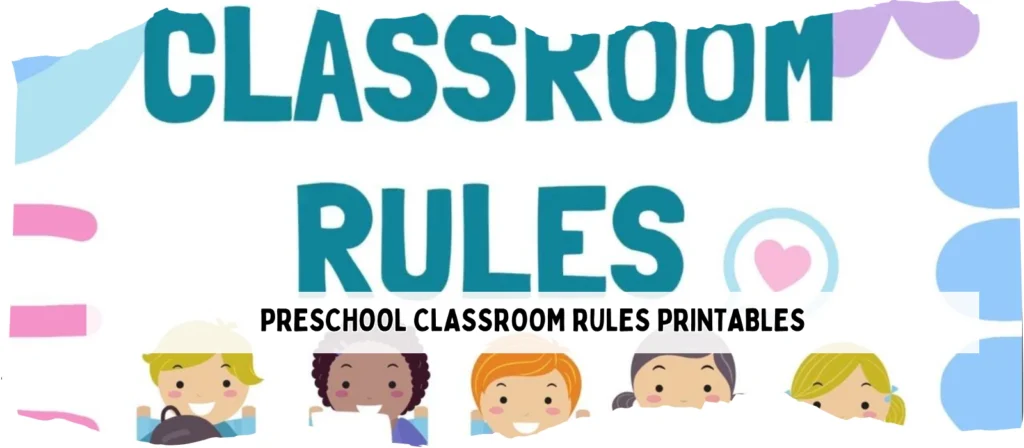
Free Preschool Classroom Rules Printables
Teachers often ask me: “Where can I find free classroom rules for preschoolers that actually look good and work well in the classroom?” The good news is that there are numerous reliable sources offering high-quality, free preschool classroom rules printables you can download, customize, and use right away.
Why Use Printables for Classroom Rules?
Printable classroom rules for preschool offer many benefits. They are visually appealing, easy to reproduce, and highly effective in reinforcing daily expectations. By using preschool classroom rules printables with simple text and engaging visuals, you help children internalize expectations in a fun and memorable way.
You can place them on classroom walls, use them in daily circle time, laminate and include them in student folders, or even send them home to encourage consistency between school and home.
Where to Find Free Classroom Rules Preschool Printables
Here are a few trusted websites where you can find free and printable classroom rules for preschool:
- TeachersPayTeachers: Offers many free downloadable rules posters made by teachers.
- Twinkl: High-quality visual printables tailored for different preschool settings.
- PreKinders: Practical printables and resources designed specifically for preschool and pre-K classrooms.
- Teaching Mama: Includes free classroom visual rule sets and matching activity cards.
- Pinterest: A visual goldmine of printable preschool classroom rules in various styles.
Each of these sources offers unique designs that can suit a range of classroom themes, color schemes, and educational philosophies.
Tips for Using Preschool Rules Printables
- Print on sturdy cardstock and laminate for durability.
- Include real classroom photos if you can—this makes rules more relatable.
- Review the rules with children every morning during circle time.
- Let kids interact with the rules by pointing to them or reciting them.
- Send a miniature version home for parental reinforcement.
By using free preschool classroom rules printables consistently, you build strong behavioral expectations in a format that children actually enjoy. They’re also a time-saver for teachers, offering professional-looking tools that reinforce structure, learning, and safety.
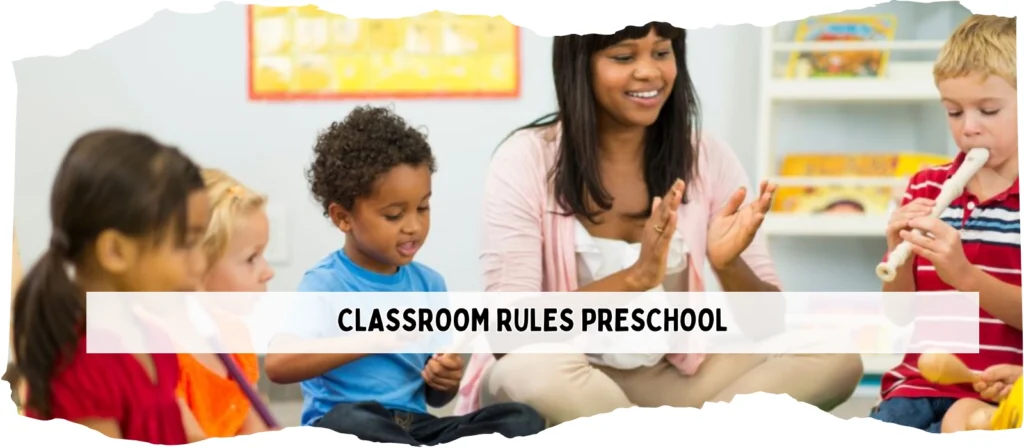
Rules of the Classroom for Preschool That Really Work
Not sure what specific classroom rules to adopt? Here’s a collection of time-tested rules that align with positive behavior models and work well across most preschool settings.
1. Use Kind Words
Helps develop empathy and respectful communication. You can model phrases like “please,” “thank you,” or “I need help.”
2. Listen When Someone Is Talking
Encourages attention, patience, and active listening. This rule helps build the foundation for effective group learning.
3. Keep Hands and Feet to Yourself
A vital rule for classroom safety, reducing accidental injuries and promoting personal boundaries.
4. Walk Indoors
Supports safety by minimizing running-related accidents. Reinforce this rule with visual floor prompts.
5. Take Care of Our Things
Encourages responsibility for classroom toys, supplies, and learning materials.
6. Try Your Best
Promotes a growth mindset. Preschoolers begin learning that effort matters more than perfection.
7. Use Inside Voices
Teaches volume control and respect for shared space. You can role-play “outside voice” vs “inside voice.”
8. Clean Up When You’re Done
Fosters independence, organization skills, and accountability. Pair this with a cleanup song or visual routine.
9. Stay in Your Own Space
Helps maintain personal boundaries and supports focus during circle time or seated activities.
10. Raise Your Hand to Speak
Encourages turn-taking and respect in group discussions, a core part of school readiness.
11. Wait Your Turn
Develops patience and fairness during shared activities like games or snack time.
12. Ask Before You Take
Builds respect for others’ belongings and nurtures consent-based behavior.
13. Follow Directions the First Time
Reduces repetition and helps teachers maintain smooth classroom flow.
14. Be a Good Friend
Reinforces prosocial behaviors like sharing, helping, and including others.
15. Keep the Classroom Tidy
Supports responsibility and pride in maintaining a clean learning environment.
16. Use Walking Feet and Helping Hands
Combines physical safety with kindness and helpfulness.
17. Say “Excuse Me” and “I’m Sorry”
Promotes manners and emotional intelligence.
18. Use Materials Properly
Encourages respect for classroom tools and prevents damage or injuries.
19. Follow the Daily Routine
Creates consistency and helps children feel secure about transitions.
20. Ask for Help When You Need It
Fosters self-advocacy and builds trust with adults in the classroom.
Each of these classroom rules for preschool is simple, specific, and positively framed. You can display them using preschool classroom rules printables or integrate them into your daily activities for repetition and reinforcement.
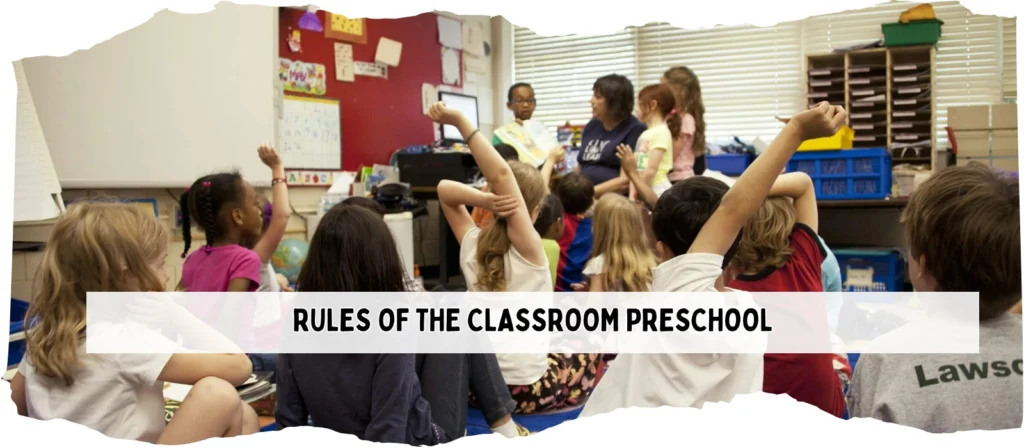
How to Enforce Preschool Classroom Rules Effectively and Gently
Creating rules is only the beginning—consistent, respectful enforcement is what makes preschool classroom rules meaningful. The goal is to help children learn self-regulation and community behavior without fear or shame. Here’s how to implement classroom rules for preschoolers with compassion and effectiveness.
Model the Rules Every Day
Children learn more from what we do than what we say. Teachers must model preschool classroom rules daily—showing kindness, listening attentively, and demonstrating calm responses to conflict. Modeling helps children internalize rules as social norms rather than imposed commands.
Use Gentle Reminders and Visual Cues
Rather than scolding, offer gentle verbal reminders: “Remember, we use walking feet inside.” Pointing to a rules poster or using a non-verbal signal (like a quiet hand gesture) also reinforces classroom rules preschool children already know without disrupting flow.
Reinforce Positively
Catch children following the rules and praise them: “Thank you for cleaning up your toys—that shows responsibility.” Positive reinforcement builds intrinsic motivation and makes children feel valued. Use sticker charts, class-wide celebrations, or simple affirmations.
Stay Consistent and Predictable
Preschoolers thrive on routine and predictability. Enforce the same rules every day, across all activities, and among all staff. When rules are inconsistently applied, children become confused or test boundaries. Consistency strengthens trust and classroom culture.
Provide Natural Consequences
Instead of punitive measures, allow natural consequences to guide behavior. For instance, “If we throw toys, we can’t play with them for a while.” Preschool classroom rules should help children understand the cause and effect of their choices.
Collaborate With Families
Partnering with parents strengthens the impact of classroom rules for preschoolers. Share the rules at the start of the year and keep families updated through newsletters or visuals. This creates consistency across school and home, reinforcing behavior expectations.
Reflect and Adjust as Needed
Sometimes, recurring issues signal a need to tweak the rules or how they’re communicated. Periodically review your classroom rules preschool students follow and involve them in updating or rephrasing them. This gives children ownership and keeps expectations relevant.
Effective enforcement of rules for preschoolers in the classroom is never about punishment—it’s about guidance, empathy, and community-building. With patience and consistency, preschool classroom rules become natural, positive parts of a child’s learning journey.

Common Mistakes When Implementing Preschool Classroom Rules
Even with the best intentions, many educators fall into common traps when putting preschool classroom rules into action. Recognizing these missteps can help create a more effective and child-friendly environment.
Too Many Rules
Preschoolers can only process a few rules at a time. Listing 10 or more rules on the wall overwhelms young learners. Stick to 3–6 key rules that are broad, yet relevant to daily routines.
Using Negative Language
Rules framed with “don’t” or “no” may be harder for children to grasp. For example, “Don’t hit” is less effective than “Use gentle hands.” Positive phrasing encourages desired behavior instead of highlighting misbehavior.
Inconsistency in Enforcement
When rules are enforced differently by various teachers or on different days, children get confused. Consistency from all staff and caregivers builds trust and helps children feel secure.
Lack of Visuals
Many classrooms forget that preschoolers are often non-readers. Using text-only rules posters won’t work. Every classroom rule should include a clear image or icon to support understanding.
Not Involving the Children
When children are involved in creating or discussing rules, they’re more likely to take ownership. Teachers who skip this step may struggle with buy-in from their students.
Ignoring Cultural Context
What’s considered “respectful” in one culture may be different in another. Rules should be inclusive and mindful of the diverse backgrounds children bring to the classroom.
Avoiding these common mistakes helps transform your rules from a list of commands into a practical, respectful guide for preschool success.
Conclusion: Supporting Preschool Classroom Rules Through Environment and Design
Preschool classroom rules are the invisible framework that supports every successful early learning environment. They empower children to grow, play, and learn within a space of safety, structure, and respect. When thoughtfully created, clearly communicated, and consistently reinforced, these rules help transform classrooms into nurturing communities where all children can thrive.
At XIHA Furniture, we understand that a well-designed classroom goes hand-in-hand with strong behavioral foundations. That’s why our preschool furniture collections are crafted to promote independence, encourage positive routines, and support rule-based learning. From child-friendly storage to defined activity zones, we help schools create physical spaces that align with their preschool classroom rules and support every child’s success.
By combining quality furniture with thoughtful behavioral guidance, educators can build classroom environments that truly work—for teachers, students, and families alike.

